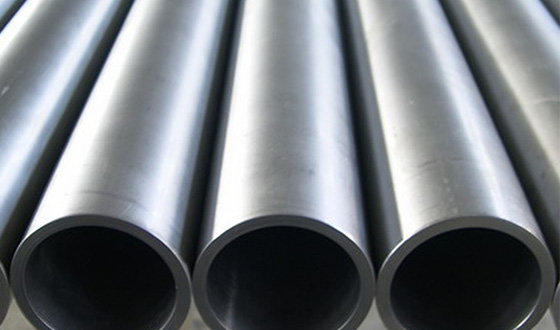-
Cangzhou Yulong Steel Co., Ltd.
-
Phone:
+86 13303177267 -
Email:
admin@ylsteelfittings.com
- English
- Arabic
- Italian
- Spanish
- Portuguese
- German
- kazakh
- Persian
- Greek
- French
- Russian
- Polish
- Thai
- Indonesian
- Vietnamese
- Zulu
- Korean
- Uzbek
- Hindi
- Serbian
- Malay
- Ukrainian
- Gujarati
- Haitian Creole
- hausa
- hawaiian
- Hebrew
- Miao
- Hungarian
- Icelandic
- igbo
- irish
- Japanese
- Javanese
- Kannada
- Khmer
- Rwandese
- Afrikaans
- Albanian
- Amharic
- Armenian
- Azerbaijani
- Basque
- Belarusian
- Bengali
- Bosnian
- Bulgarian
- Catalan
- Cebuano
- China
- China (Taiwan)
- Corsican
- Croatian
- Czech
- Danish
- Esperanto
- Estonian
- Finnish
- Frisian
- Galician
- Georgian
- Kurdish
- Kyrgyz
- Lao
- Latin
- Latvian
- Lithuanian
- Luxembourgish
- Macedonian
- Malgashi
- Malayalam
- Maltese
- Maori
- Marathi
- Mongolian
- Myanmar
- Nepali
- Norwegian
- Norwegian
- Occitan
- Pashto
- Dutch
- Punjabi
- Romanian
- Samoan
- Scottish Gaelic
- Sesotho
- Shona
- Sindhi
- Sinhala
- Slovak
- Slovenian
- Somali
- Sundanese
- Swahili
- Swedish
- Tagalog
- Tajik
- Tamil
- Tatar
- Telugu
- Turkish
- Turkmen
- Urdu
- Uighur
- Welsh
- Bantu
- Yiddish
- Yoruba

Nov . 04, 2024 09:43 Back to list
flange screw
Understanding Flange Screws Design, Applications, and Benefits
Flange screws are an essential component in various engineering and construction applications, distinguished by their flat, circular flange located beneath the head of the screw. This unique feature is what sets them apart from standard screws and bolts, providing several advantages that enhance their usability across diverse fields. In this article, we will explore the design characteristics, applications, and benefits of flange screws, emphasizing their importance in achieving robust and reliable fastening solutions.
Design Characteristics
The primary design characteristic of flange screws is the flange itself, which serves multiple purposes. First, it acts as a washer, distributing the load evenly across the surface of the material being fastened, which helps prevent damage and wear. The flange also reduces the likelihood of loosening over time, as it enhances the screw's grip on the material. Flange screws are available in various materials, including stainless steel, carbon steel, and aluminum, allowing for selection based on factors like corrosion resistance, strength, and weight.
The head of a flange screw can be of different types—hex, slotted, or Phillips, among others. This versatility in head design allows for the use of various tools for installation, providing flexibility for different working environments. Furthermore, flange screws come in various sizes and thread types, enabling them to meet the specifications of numerous applications.
Applications
Flange screws find utility in an array of industries, including automotive, construction, electronics, and manufacturing. In the automotive sector, they are commonly used to secure body components, engine parts, and chassis assemblies due to their reliability under vibration and movement. In construction, flange screws are often employed to fasten structural elements, roofing systems, and frame fittings, where stability and load distribution are critical.
flange screw

In electronics, the need for compact and secure fastening solutions makes flange screws an ideal choice for assembling various components such as circuit boards and enclosures. Their design helps prevent overheating and ensures a reliable connection, which is vital for optimal performance.
Benefits
One of the most significant benefits of using flange screws is the reduction in the number of components required for securing materials. The dual function of the flange (serving both as a head and a washer) minimizes the need for additional washers, which can save costs and simplify assembly processes. Additionally, because of their stability, flange screws provide better resistance to loosening due to vibration and thermal expansion, making them suitable for high-stress applications.
Another advantage is the ease of installation. The flange creates a larger bearing surface that allows for easier tightening compared to traditional screws. This feature can lead to faster assembly times, reducing labor costs and improving overall efficiency in production lines.
Conclusion
Flange screws are a vital fastening solution across multiple industries, offering unique design advantages that enhance performance and reliability. Their multifunctional characteristics, broad range of applications, and efficiency in installation make them indispensable in modern manufacturing and construction. As industries continue to evolve, the demand for versatile and reliable fastening solutions like flange screws will undoubtedly persist, driving innovation and development in this essential area of engineering.
Latest news
-
ANSI 150P SS304 SO FLANGE
NewsFeb.14,2025
-
ASTM A333GR6 STEEL PIPE
NewsJan.20,2025
-
ANSI B16.5 WELDING NECK FLANGE
NewsJan.15,2026
-
ANSI B16.5 SLIP-ON FLANGE
NewsApr.19,2024
-
SABS 1123 FLANGE
NewsJan.15,2025
-
DIN86044 PLATE FLANGE
NewsApr.19,2024
-
DIN2527 BLIND FLANGE
NewsApr.12,2024
-
JIS B2311 Butt-Welding Fittings LR/SR 45°/90° /180°Seamless/Weld
NewsApr.23,2024











